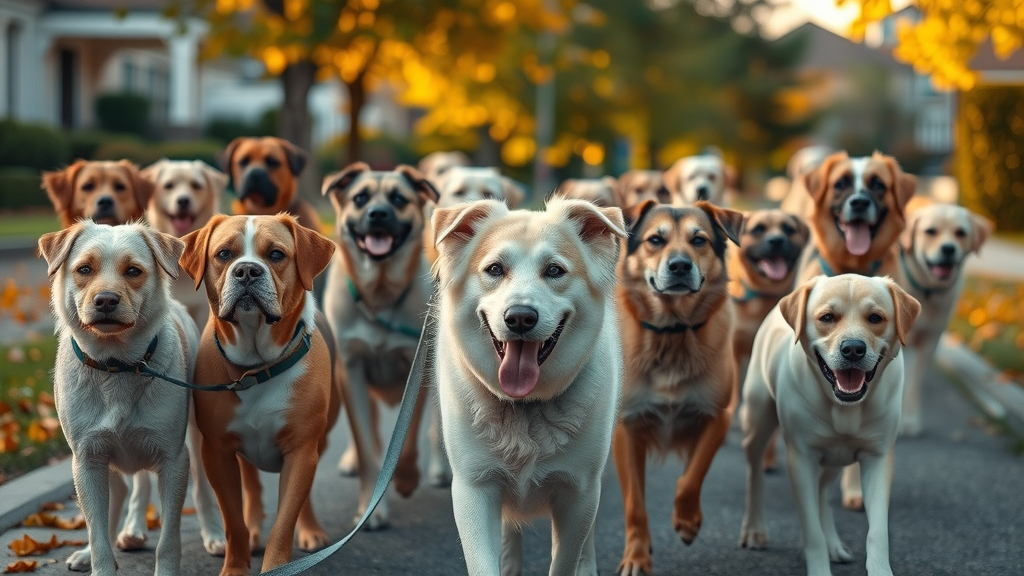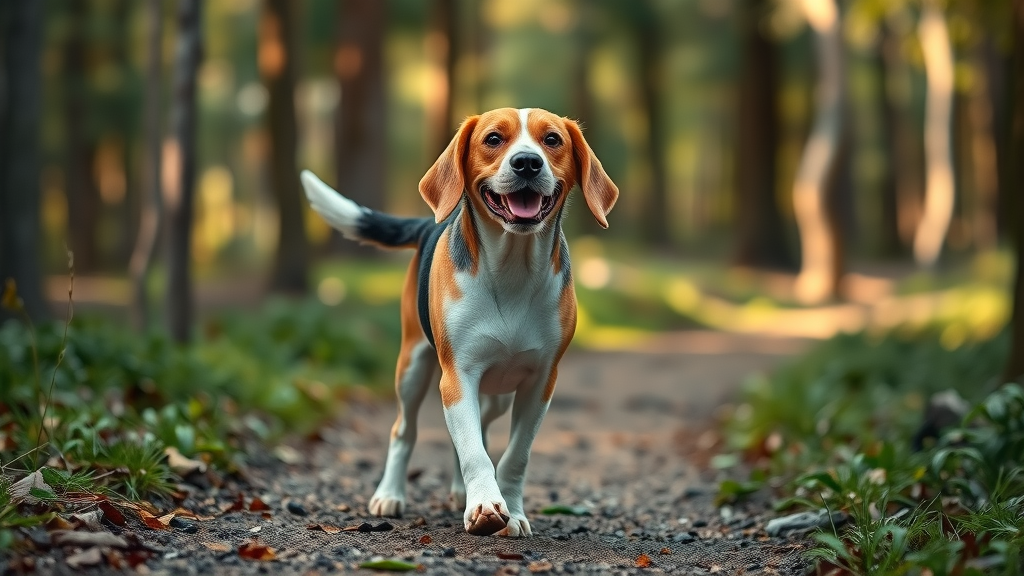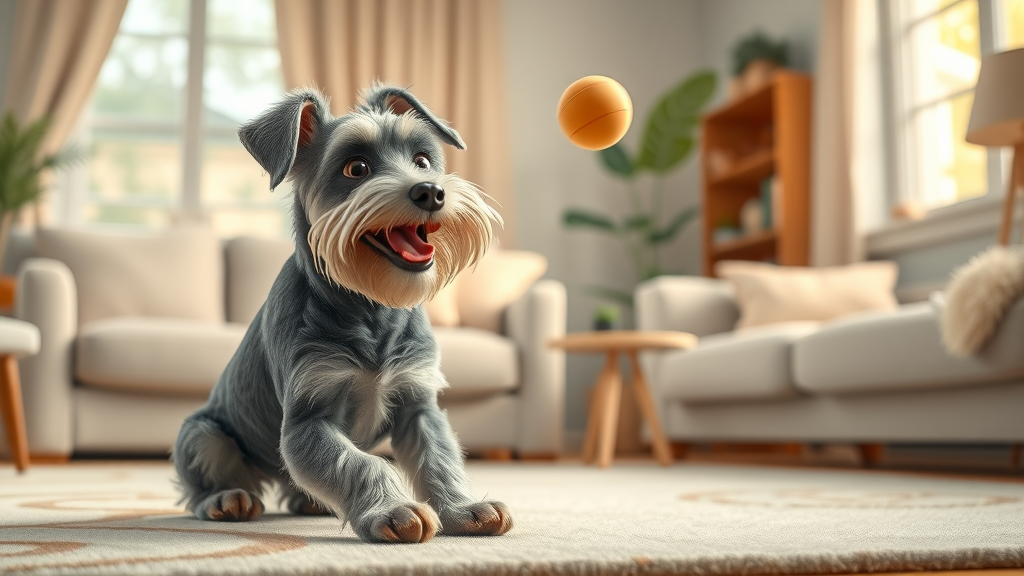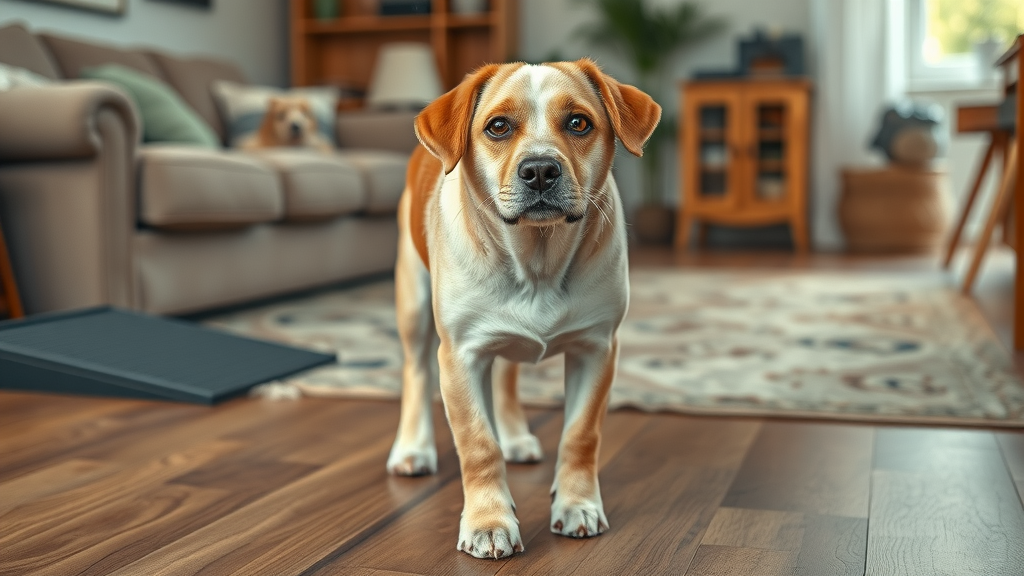Did you know that over 60% of senior dogs experience mobility challenges after age 8 ? Despite these numbers, many devoted pet parents still underestimate how crucial it is to adapt exercise routines for their older dogs. If you’re determined to help your senior pup enjoy a vibrant, happy, and healthy life, understanding and implementing expert-backed senior dog exercise tips can make all the difference. Dive in as we uncover everything you need to keep your furry companion moving comfortably through their golden years.

Why Senior Dog Exercise Tips Matter: Surprising Facts About Aging Pets
- Recent studies reveal over 60% of senior dogs experience mobility challenges after age 8—yet most pet owners underestimate the importance of tailored exercise. Discover how senior dog exercise tips can greatly enhance quality of life and longevity.
As dogs age , their metabolism, energy levels, and physical capabilities change. Regular exercise for senior dogs is vital—not just for weight management, but also for keeping joints mobile and maintaining cardiovascular health. Many older dogs develop arthritis, joint pain, or mobility issues, but safe and strategic physical activity can slow these changes and keep them enjoying their daily walk or playtime.
Implementing the right senior dog exercise tips can reduce the risk of joint disease, support mental stimulation, and offer much-needed structure during the golden years . Ignoring these changes can lead to weight gain, muscle loss, and a steep decline in quality of life. Empower yourself and your older pup with knowledge—and see the difference personalized routines make for their happiness.
Unlocking the Benefits: Senior Dog Exercise Tips Every Owner Should Know
How Senior Dog Exercise Tips Promote Joint Health and Overall Vitality
- Maintain healthy weight
- Support heart health
- Encourage mental stimulation
- Boost mobility
One of the primary goals of senior dog exercise tips is to improve their quality of life . For older dogs, gentle and consistent physical activity keeps muscles engaged and joints lubricated, helping to fend off joint pain and stiffness commonly seen in conditions like arthritis and hip dysplasia. Maintaining a healthy weight is another crucial benefit—excess pounds put strain on aging muscles and joints, aggravating mobility issues.
Equally important is supporting cardiovascular health and encouraging mental stimulation as part of your dog’s exercise routine . Physical activity, whether it’s shorter walks, swimming, or gentle play, enhances blood flow throughout the body and prevents cognitive decline, keeping your senior pup both physically and mentally engaged. Interactive exercises and puzzles provide much-needed mental and physical enrichment.
Key Risks of Neglecting Regular Exercise for Senior Dogs
"Regular exercise for senior dogs is just as vital as for younger pups, but their routines must adapt to changing needs." – Dr. Emily Carter, Veterinary Geriatrics Specialist
Neglecting regular exercise can have severe consequences for senior dogs. Without enough physical activity, older dogs can quickly gain weight, which puts extra pressure on muscles and joints and increases the risk of joint disease. Limited movement often leads to muscle wasting and decreased mobility, making daily activities difficult and reducing confidence.
In addition to the physical decline, a lack of movement can result in boredom and depression. Many pet parents notice their senior dogs become withdrawn or anxious without daily opportunities for mental and physical stimulation . To prevent age-related decline, adopt a comprehensive exercise plan tailored to your dog’s evolving needs.
What You'll Learn From These Senior Dog Exercise Tips
- The safest activities for older dogs
- How to tailor walking routines for senior pups
- Recognizing signs of overexertion
- At-home exercises to keep senior dogs active
- FAQs and expert-backed guidance
By following these tips, you’ll discover how to safely support your dog’s vitality—whether it’s through low-impact indoor activities, mentally engaging games, or simply learning to adjust to their comfort level. Your dog’s golden years can truly be their happiest with the right balance of movement and rest!
We’ll also address popular questions pet parents have, offer practical advice from veterinarians and animal behaviorists, and provide actionable strategies for tracking your older dog's progress over time. Let’s get started on your journey to keeping your senior dog fully engaged and thriving!
Understanding Your Senior Dog: Age, Behavior, and Exercise Needs

Defining a Senior Dog: Age Ranges and Common Traits
A senior dog is generally considered one that has reached the final third of its expected lifespan—often around age 7 for large breeds and age 10 for smaller breeds. However, it’s not just about numbers. Older dogs commonly exhibit more gray fur, a slower gait, reduced energy levels, and may experience underlying health concerns like joint pain or decreased organ function.
Pet parents may notice their dog sleeping more or engaging in play less often. Appetite and sensory acuity (like sight and hearing) may also decrease with age. Understanding these typical changes helps you tailor senior dog exercise tips for maximum safety and benefit, keeping their routines both enjoyable and achievable.
The Impact of Age on Older Dog Energy Levels and Mobility
As dogs age , muscle mass and joint flexibility decline, which means they tire more easily and are at greater risk for injuries such as sprains or strains. Energy levels drop naturally, but dogs benefit immensely from an exercise routine that’s consistent yet conservative, focusing on low-impact movement to maintain flexibility and prevent further joint issues.
For some, that means switching from long hikes to shorter walks on soft surfaces, or replacing vigorous games with gentle indoor fetch using a soft toy. Even with mobility challenges, mental and physical exercise slows cognitive and muscular decline, boosting your dog’s zest for life.
| Dog's Age | Recommended Daily Exercise | Common Physical Limitations | Mental Stimulation Needs |
|---|---|---|---|
| 7–9 years | 30–45 minutes, low-impact | Early joint stiffness, mild weight gain | High (interactive games, training) |
| 10–12 years | 15–30 minutes, shorter walks | Arthritis, mobility issues | Medium/High (puzzle toys, routine changes) |
| 13+ years | 10–20 minutes, gentle play | Severe joint pain, diminished strength | Medium (gentle interaction, scent games) |
Personalizing Senior Dog Exercise Tips: Assessing Your Pup's Health
Key Questions to Ask Your Veterinarian About Senior Dog Fitness

Consultation with a veterinarian before modifying your senior pup’s exercise routine is non-negotiable. Ask your vet about your dog's ideal activity level, risk factors for joint disease or muscle atrophy, and any breed-specific restrictions to consider. Inquire if existing health issues—like hip dysplasia or heart conditions—require specific precautions, or if a canine physical therapist can offer guidance for safe strengthening exercises.
Consider discussing nutritional support as well—a balanced diet can enhance the benefits gained from regular exercise . Your vet can identify early warning signs of pain or fatigue so you can respond before minor issues become major setbacks for your older dog.
How to Monitor Signs of Discomfort in Older Dogs During Exercise
- Watch for limping, excessive panting, hesitancy with stairs, or reluctance to move.
It’s important to keep a careful eye on your dog during walks and play sessions. If your senior pup shows any of the above, reduce intensity immediately and consult your veterinarian. Persistent symptoms may indicate joint pain , overexertion, or a need to rethink your exercise plan —for instance, substituting longer walks with brief strolls or indoor activities.
Feel your dog’s joints before and after exercise for heat, swelling, or tenderness. Record patterns in their behavior to catch even subtle signs that your senior dog's needs are changing. Always choose careful monitoring over pushing through discomfort.
Adapting Regular Exercise for Senior Dogs: Safe Recommendations
The Value of Shorter Walks for Older Dogs

When it comes to regular exercise for senior dogs, shorter walks taken more frequently often trump lengthy single outings. Shorter walks reduce the risk of exhaustion and strains, especially for dogs with arthritis or heart issues. Soft trails or grassy parks cushion their muscles and joints , making movement easier and minimizing impact.
Even if your older dog was once an adventurer on long hikes, it’s essential to prioritize quality over quantity. Let them dictate the pace; if they want to sniff or rest, allow it. The goal is gentle movement and engagement, not distance or speed.
How Regular Exercise for Senior Dogs Reduces Age-Related Decline
The benefits of a consistent exercise routine extend beyond the body. Keeping older dogs physically and mentally stimulated increases their longevity, helps combat cognitive decline, and maintains a sense of purpose. Swimming is an excellent choice for those able, as the water supports joint health while limiting the risk of injury.
Remember, combine activities—walk one day, try gentle fetch the next, and do simple training or scent games indoors later in the week. By staying creative and responsive, you’re helping your pup stay adaptable and happy throughout their senior years.
Best Senior Dog Exercise Tips: Practical Ideas to Keep Your Pup Engaged

- Gentle leash walks
- Swimming (if appropriate)
- Interactive mental stimulation games
- Fetch with a soft toy
- Structured indoor activities for rainy days
Try rotating through several safe senior dog exercise tips during the week: leash walks in familiar neighborhoods, brief swims (always with a life vest if needed), or even stair walks with vet approval. For mental exercise, puzzle feeders and hide-and-seek games stimulate your dog’s brain, while low-impact tug or gentle fetch with a soft toy gets those muscles moving.
Tailoring Play Sessions Using a Soft Toy for Senior Pups
Many older dogs love to play but can no longer sprint or leap as they once did. Use a lightweight soft toy for games of short-distance fetch or tug, or encourage gentle playtime indoors on carpets or soft rugs. Always supervise sessions, especially if your senior dog has dental issues or diminished vision.
Adjust the energy level according to your senior pup’s comfort—some thrive on gentle movements, while others enjoy searching for hidden toys around the room. Keep playtimes brief but frequent, and rotate toys to maintain interest and provide mental stimulation .
Incorporating Mental Stimulation Into Exercise for Older Dogs
The mind needs exercise just as much as the body—especially in senior dogs . Try puzzle toys, treat-dispensing devices, or scent-based search games. Training sessions using simple commands or new tricks also provide essential mental stimulation , helping slow cognitive decline and improving the overall well-being of your older companion.
Consider inviting your older dog to learn new tasks at their own pace, rewarding with treats and praise. This keeps routines fresh and builds a deeper bond between pet and parent. Always finish on a positive note to ensure exercise is associated with fun, not fatigue.
Monitoring Progress: Adjusting Senior Dog Exercise Tips Over Time

Recognizing and Preventing Overexertion in Senior Dogs
Tracking your senior dog's activity—either with a notepad, smartphone, or even a pet fitness tracker—helps you spot trends and catch warning signs early. Overexertion may present as wobbling, excessive panting, sudden fatigue, or disinterest in usual activities. Reduce duration, try alternative activities, or add rest days when these signs appear.
Remember that the aging process means exercise tolerance can change quickly. By observing and adapting sessions weekly, you keep your older dog safe and happy, and ensure ongoing improvement instead of setbacks.
When to Consult a Veterinarian About Older Dog Exercise Routines
If your dog suddenly resists walks, exhibits persistent limping, or loses enthusiasm for previously enjoyed activities, consult your veterinarian. Changes in appetite, mood, or elimination after exercise are also red flags. Your vet can check for underlying conditions or recommend specialized therapies to alleviate discomfort and optimize your dog’s activity over time.
Seasonal Adjustments: Modifying Senior Dog Exercise Tips Year-Round
Protecting Older Dogs in Hot and Cold Weather
Temperature extremes can complicate physical activity, especially for older dogs . In summer, walk during cool hours, provide water breaks, and avoid hot pavement. In winter, dress your senior dog in a fitted sweater and stick to clear, ice-free paths. Avoid outdoor play if conditions are too harsh, and always check for shivering, overheating, or paw discomfort.
Adjust intensity and duration accordingly, erring on the side of caution to avoid undue strain or illness. If your dog dislikes adverse weather, consider more frequent but shorter indoor activities.
Indoor Senior Dog Activities for Inclement Conditions
Keep your senior pup moving even when it’s raining or snowing by creating fun activities inside. Practice basic obedience or set up an indoor mini-obstacle course using household objects. Roll a soft toy or try interactive food puzzles for both physical and mental stimulation .
Don’t forget, even short sessions matter—consistency is key to maintaining mobility and cognitive sharpness in the golden years . Always supervise indoor activities for safety.
People Also Ask: Answering the Top Senior Dog Exercise Questions
What is the best exercise for senior dogs?
- Low-impact walks, gentle swimming, and interactive games focused on mental stimulation and light movement are among the best exercise options for senior dogs.
What to do if a 15 year old dog's back legs are giving out?
- Consult a veterinarian immediately. Consider fit-for-purpose mobility aids and incorporate supportive exercises as advised by your vet. Avoid strenuous activity.
How much exercise should a senior dog get?
- Most senior dogs benefit from 15-30 minutes of low-impact activity daily, tailored to their mobility and health status.
Should you walk a 14-year-old dog?
- Yes, short and regular walks are beneficial for 14-year-old dogs. Monitor their comfort and adjust duration based on their response.
Expert Tips for Keeping Older Dogs Motivated and Safe
- Use treats and positive reinforcement
- Rotate toys, like a soft toy, for mental stimulation
- Gradually introduce new activities
- Track changes in energy and adaptability
Motivating your older dog requires patience, creativity, and plenty of encouragement. Rotate play items and experiment with new games to find what sparks your dog’s interest, rewarding successes along the way. Gradually introducing exercises—and carefully monitoring response—is essential for building adaptability and resilience in your senior canine companion.
Common Myths About Senior Dog Exercise Tips Debunked
- Myth: Senior dogs should rest, not exercise
- Myth: Only young dogs enjoy play
- Myth: Mental stimulation isn’t important for older dogs
"Even short activity sessions can help older dogs stay healthier, happier, and more engaged with their families." – Dr. Carlos Martinez, Animal Behaviorist
In reality, even small amounts of physical activity paired with engaging mental exercise deliver powerful benefits for your senior dog . The belief that rest is preferable to movement is outdated—current science shows regular, structured activity helps maintain health, happiness, and socialization for dogs in their senior years .
Dispel the myth that play is just for puppies. With creative, age-appropriate approaches—like gentle tug, search games, or supervised swimming— older dogs rediscover their zest for life well into their twilight years.
Frequently Asked Questions About Senior Dog Exercise Tips
- Can senior dogs develop new exercise routines?
- Are there safe group classes for senior dogs?
- How do I know when to slow down my older dog's routine?
Can senior dogs develop new exercise routines? Yes! With patient introduction and appropriate modifications, many senior pups enjoy trying new activities—always consult your vet for safety.
Are there safe group classes for senior dogs? Some communities offer senior dog fitness or swimming classes. Look for instructors familiar with the needs of aging dogs or ask your veterinarian for recommendations.
How do I know when to slow down my older dog's routine? Signs like frequent panting, lagging, reluctance to move, or changes in gait mean it's time to shorten sessions. Always prioritize your dog’s unique feedback.
Aging Gracefully: Key Takeaways for Implementing Senior Dog Exercise Tips
- Customize routines for your senior dog's needs
- Prioritize daily movement, even if brief
- Combine physical activity with mental enrichment
- Regularly communicate with your vet
| Exercise Type | Senior-Friendly Modifications | Warning Signs to Pause |
|---|---|---|
| Walking | Shorter, more frequent walks on soft surfaces | Limping, fatigue, reluctance to continue |
| Swimming | Supervised, short sessions with life vest if needed | Difficulty exiting pool, whining, shivering |
| Play/Fitness Games | Gentle fetch indoors, low-impact training games | Disinterest, confusion, stumbling |
| Mental Exercise | Puzzle toys, scent games | Aggression, frustration, excessive panting |
Ready to Help Your Senior Pup Thrive? Practical Next Steps for Senior Dog Exercise Tips
- Evaluate your senior dog's current activity level
- Consult your veterinarian before changes
- Start with recommended senior dog exercise tips today to enhance your pup’s health and happiness
Begin customizing your senior dog's fitness journey using these tips—prioritize safety, enrichment, and open communication with your veterinary team for a truly happy and healthy golden years experience!
To further enhance your understanding of senior dog exercise, consider exploring these resources:
-
The American Kennel Club’s article, How to Provide Your Senior Dog With Proper Exercise , offers expert advice on adapting exercise routines to meet the needs of aging dogs.
-
Dogster’s comprehensive guide, 11 Tips for Exercising Your Senior Dog , provides practical tips to keep your senior dog active and healthy.
These resources offer valuable insights to help you tailor exercise routines that promote the health and happiness of your senior dog.
 Add Row
Add Row  Add
Add 








Write A Comment